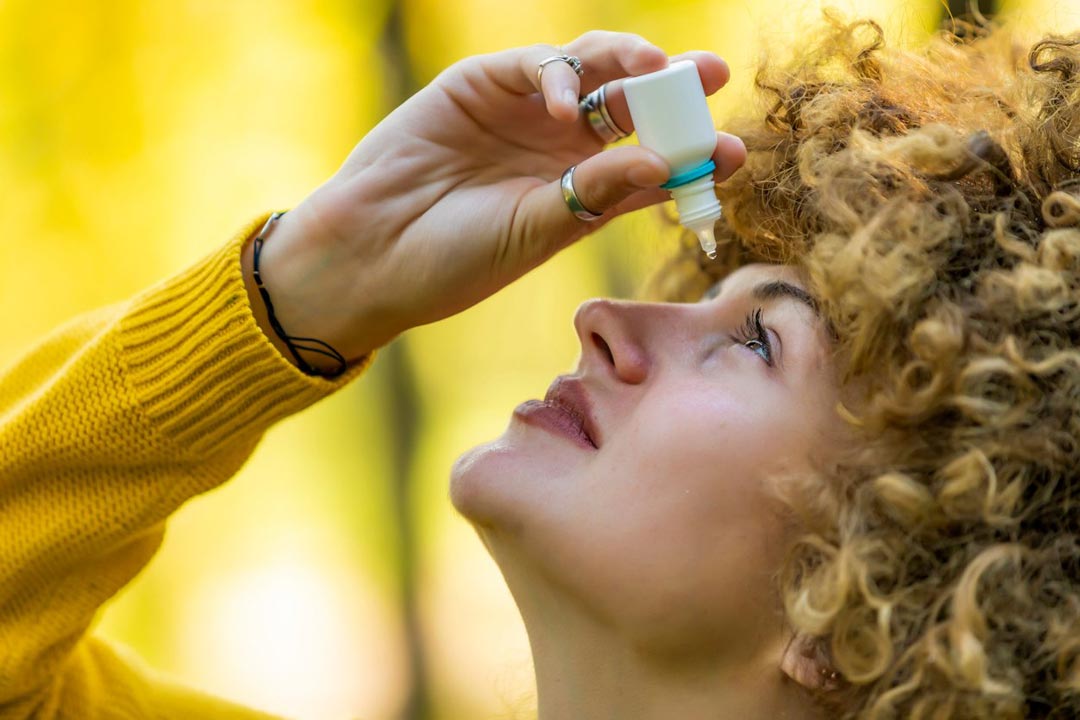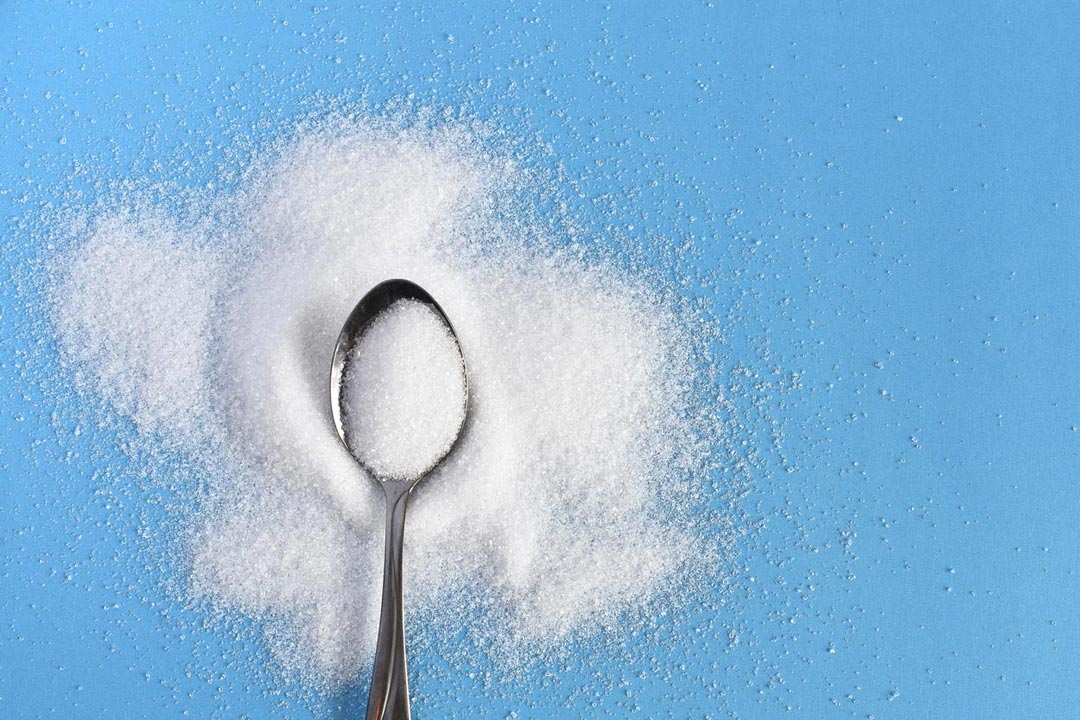Images sourced from Parade
By Nicole Pajer / April 16, 2021
Feeling like your eyes are drier than usual? You’re not alone. And you have activities like staring at your devices all day, your Netflix and chilling habit, seasonal allergies and the natural aging process to blame. “Today, more people are suffering from symptoms of dry eye, which may include redness, light sensitivity or a sandy, gritty feeling, blurry vision or a sensation that there’s something in the eye (foreign body sensation),” says Dr. Jonah Berman, OD, a New York City-based optometrist and Lensdirect medical expert.
He adds that occasionally, some people will experience watery, teary eyes, which seem to contradict the experience one would expect to have with dry eye. But this is actually the body’s way of quickly dispensing tears to combat dryness. “It’s like an extinguisher automatically discharging when the ambient temperature gets too hot or the humidity too dry,” Dr. Berman adds. Long story short: Watery eyes can be a sign that your eyes could use some TLC as well.
Home remedies for dry eyes
1. Use warm eye compresses and eyelid scrubs
“Just like brushing your teeth is important for oral hygiene, regular use of warm compresses and eyelid scrubs are important for eyelid hygiene and reducing symptoms of dry eyes,” says Dr. Dagny Zhu, MD, a cornea, cataract and refractive surgeon with NVISION Eye Centers. She explains that evaporative dry eye syndrome, the most common cause of dry eye disease, is due to clogging of the tiny oil glands (meibomian glands) located along the upper and bottom margins of the eyelid. “These glands normally secrete meibum, a protective lipid layer that coats the surface of the eye and prevents evaporation of the aqueous tear film,” Dr. Zhu explains.
Warm compresses and eyelid scrubs help maintain healthy meibum secretion. Dr. Zhu says to: “Make a warm compress by soaking a washcloth in warm water or microwaving a sock with rice for 45 seconds. Place the warm compress over the eyelids with your eye closed and gently massage towards the eyelid margin to loosen up the clogged oil glands. Then use a clean finger or Q-tip with baby shampoo to clean the debris and oils expressed along the lash line.”
2. Think about your sleep surroundings
“Sleeping under an AC vent or a ceiling fan is going to evaporate the tear film, even with your eyes closed,” says Dr. Stephen Slade, MD, of Slade & Baker Vision in Houston and member of the Refractive Surgery Council editorial advisory board. Try closing the vent at night or opening a window to cool down the room instead of running the AC or a fan.
3. Sleep with your eyes closed
Slade says that when sleeping, it’s important to make sure you sleep with your eyes actually closed. “It isn’t as uncommon as you might think,” he says. The condition is caused by nocturnal lagophthalmos and is said to affect 20% of the population.
If you suspect you might be sleeping with your eyes open, try asking a friend, family member or bedmate to observe you sleeping at night to see if they can observe this. Experiencing dry eye, light sensitivity or blurry vision during the day could also be a symptom. Talk to your doctor if you are exhibiting these symptoms, as the condition is treatable.
4. Take a phone or computer break
“We know device use—screen time—reduces blink time,” explains Dr. Slade. But blinking is essential for keeping the surface of the eye moist and healthy. “Take a break. Get up and move around and give your eyes a rest,” he says. “It can really help.” Dr. Berman says to keep the 20/20/20 rule in mind: “Every 20 minutes, look 20 feet away from your screen for 20 seconds.” And to really drive this point home, Dr. Zhu says we normally blink 10-15 times per minute, but this drops to half when we stare at a screen.
5. Do some blinking exercises
One study showed that when people with dry eyes performed 10-second cycles of blinking exercises every 20 minutes while awake for four weeks, they showed improvements in their symptoms. “This can also train you to blink more automatically while viewing screens,” says Dr. Stacie J. Stephenson, DC, CNS, DABAAHP, FAARM, and founder of TheVibrantDoc.
6. Use eye drops
“Before going to bed, consider using a drop of preservative-free or biodegradable preserved artificial tears to keep the eyes moist overnight,” says Dr. Berman. If you wake up in the morning and your eyes still feel dry, you can use another drop or two then as well. Dr. Diane Hilal-Campo, MD, an ophthalmologist based in Oakland, New Jersey, says to “use preservative-free tears eye drops every two to three hours when using the computer for work or school.”

7. Aim for 7-9 hours of sleep per night
Studies have shown that sleep deficiency can bring on dry eye by reducing the quantity and quality of tear film production. “The resulting stress weakens our immune system. And this can make it more difficult for our eyelids, eyelashes and tear film to fight off infections caused by the bacteria on our skin around our eyes,” adds Dr. Berman.
8. Stay hydrated
“This is a basic thing that everyone should be doing more of in general, especially anyone with dry eyes,” says Dr. Kaushal Kulkarni, MD, a board-certified ophthalmologist and founder and CEO of Eyetamins. Staying hydrated, he explains, will keep the water content of your cells and mucous membranes at optimal levels, including those in the conjunctiva and cornea. Dr. Hilal-Camp says to drink at least eight 8-ounce glasses of water a day. “Reduce alcohol and caffeine, which are diuretics and can dehydrate you,” she adds.
9. Use a humidifier
“Humidity can improve the evaporative component of dry eye, decreasing the tear break up time (measured in the office) and improving the sensation,” says Manhattan-based eye doctor Dr. Yuna Rapoport, MD, MPH. She suggests having a humidifier set to hot air running in the bedroom overnight, or in the office during the day. “This helps keep the cornea more hydrated and less dry,” she says.
10. Cut back on the sugar
“People with metabolic syndrome, a pre-diabetic condition, as well as people with type 2 diabetes, tend to have more problems with dry eyes than people with controlled blood sugar,” says Dr. Stephenson. Researchers think this is because people with blood sugar issues have more inflammatory oxidative stress in general, and this can attack the eyes. “Reducing sugar intake and eating more whole, anti-inflammatory vegetables and fruits could reverse this effect. Blood sugar can often be controlled through lifestyle,” says Dr. Stephenson. She notes that getting healthy and controlling your blood sugar will help you in multiple ways, and that includes your eyes.

11. Get your omegas
Dr. Kelsey Kleinsasser, OD, a cornea, glaucoma, cataract and refractive surgeon with the Summit Eye Center, says patients often benefit from omega-3 fish oil consumption. “Inflammation is often a component to dry eye and omega-3 supplements help to minimize inflammation,” he says. And Dr. Zhu adds says eating foods high in omega-3 fatty acid content including fatty fish, flaxseed, and soybeans may be helpful in some cases of dry eye disease.
12. Properly remove your makeup at night
Dr. Ada Noh, OD, an optometrist at Bellmawr Eye Care located in Bellmawr, New Jersey, says it’s important to be sure to remove your eye makeup completely and to avoiding wearing makeup right on the water line. “The water line is where the heads of the meibomian glands are, so putting eyeliner here clogs the gland,” she says.
13. Get enough vitamin D
“Do you work indoors frequently? If so, vitamin D may also play a role in dry eye symptoms, especially during winter months,” says Dr. Leigh Plowman, OD, an optometrist and founder of DryEyeDirectory.com. One study found that vitamin D reduced dry eye syndrome after 2 weeks of supplementation. Dr. Plowman says to ask your doctor for a routine Vitamin D test. You can boost your outdoor exposure with about fifteen minutes in the sun per day. Oral supplements can help to boost your levels.
14. Wear sunglasses
The sun and the wind may irritate your eyes. So when you are outside in the sun, be sure to wear sunglasses to protect your eyes from glare and harmful ultraviolet light. “To prevent wind from drying out your eyes, select a pair of sunglasses, which feature a wraparound front curvature and which fit snuggly but comfortably,” says Dr. Berman.

15. Exercise
Research has shown that people who exercise have a higher tear volume than people who don’t, and people with dry eyes tend to exercise less than those without dry eyes. Studies have shown that exercise can improve symptoms of dry eye by increasing tear volume, so starting a regular exercise program may help relieve symptoms. “Start where you are—any exercise is better than no exercise. I recommend working up to about 150 minutes a week, or 30 minutes of moderate exercise on most days,” says Dr. Hilal-Campo.
16. Review your medications
“Certain medications like antihistamines or blood pressure medications can reduce the aqueous production and cause a dry eye,” explains Dr. Hilal-Campo. If you are experiencing medicine-related dry eye, make a point to discuss possible alternatives with your doctor.
